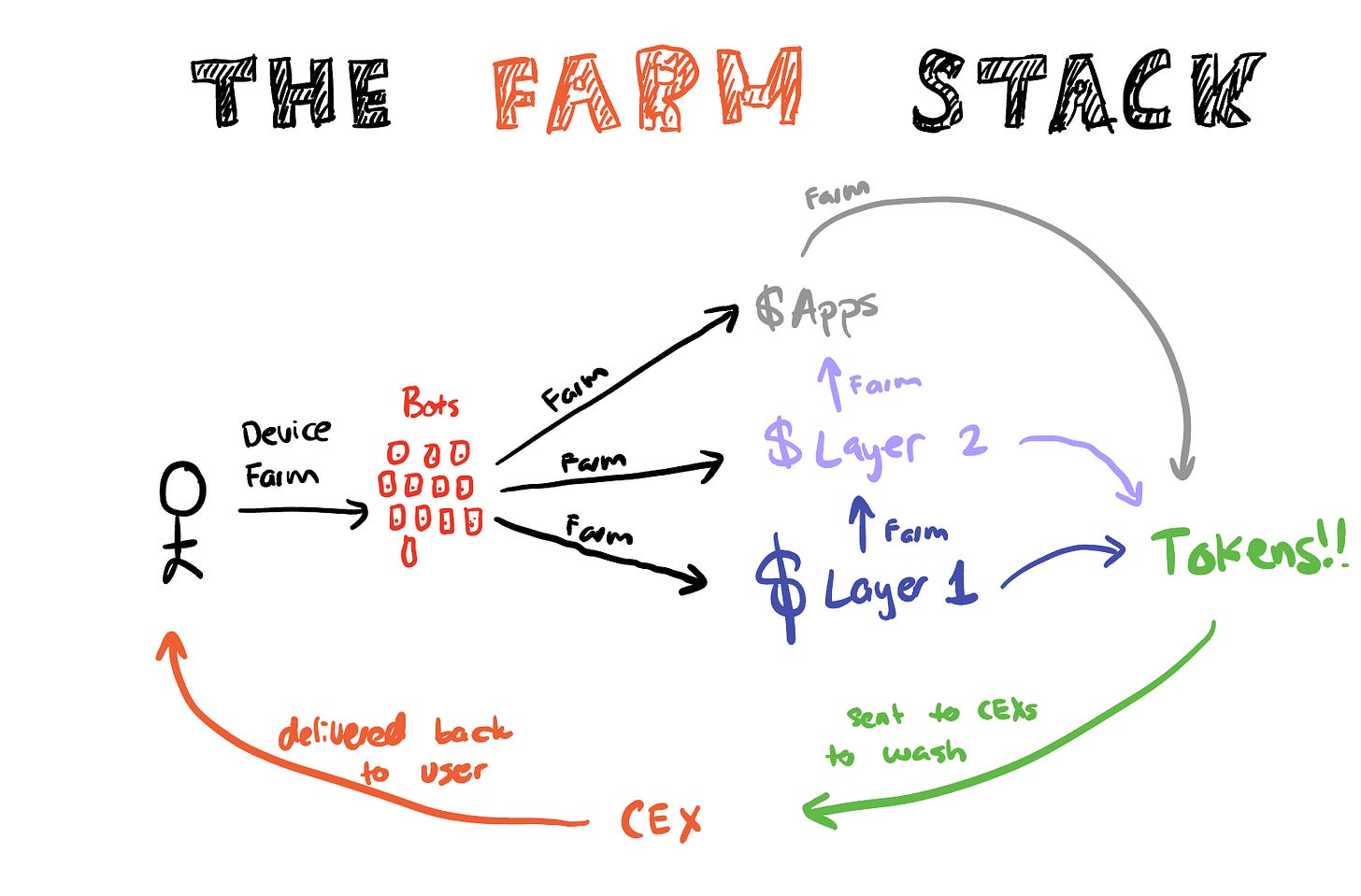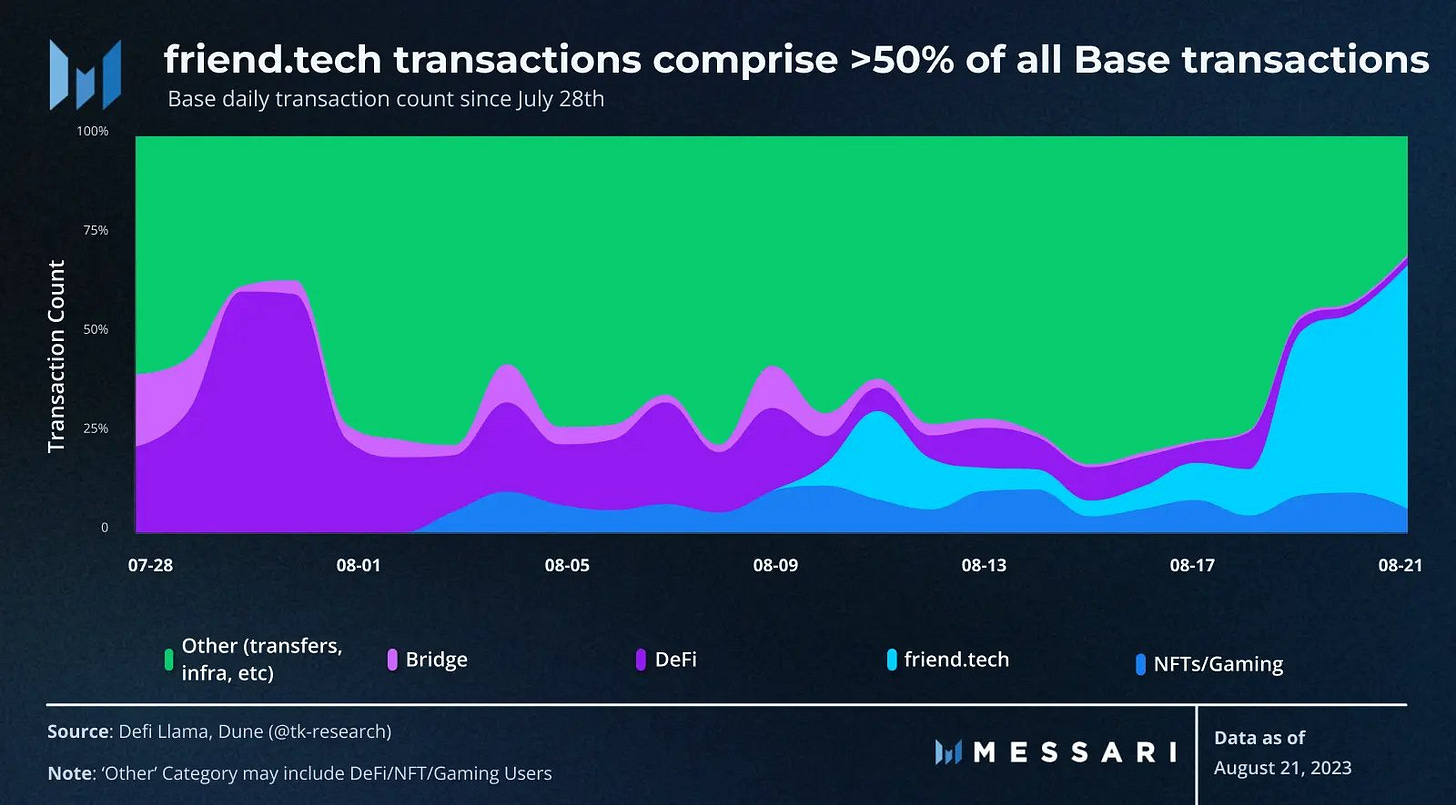One thing that’s bothering me increasingly over the past few years has been this industry’s increasing reliance on “data”. The reason why I put it in quotes is because most of it is fake/not real. To demonstrate what’s happening and how it works, I thought I’d write a longer form piece around the whole issue. As I started researching this article i realised just how industrialised this whole thing is and how much investors are getting fooled by it. The whole thing is one big joke and shows how far the industry has to go as a whole.
Layer 1 Valuations
Our issues begin at these over-priced, over-hyped tokens that investors are willing to pay billions of dollars for in. All you need is a fancy whitepaper and you can skew the unit economics of it all. My research begins on Dune where I found this dashboard calculating CAC for multiple airdrops.
This is a good start although I do want to point out these CACs (from the project’s point of view) are all underestimated numbers since they simply go: dollar value ($) / addresses claimed. What this calculation doesn’t take into account is what % actually retained the airdrop. Given only 10%-20% of addresses typically hold airdrops it’s safe to assume these CAC numbers are anywhere from 5x-10x higher what you see above.
The second thing here is that we have an implicit tier of what airdrops will be worth how much:
Layer 1/layer 2/hyped protocol = multi thousand $ payout
Small-mid size applications = multi hundred $ payout
Luckily, the two aren’t mutually exclusive! If you use the right applications on the right chains, you get both airdrops — woo!!! Go airdrop farming!
So ideally you want to structure your airdrop farming to focus on chains first then farm as many airdrops as you possibly can beyond that point. Okay, but the question is what comes next?
Finding the Right Airdrop
Luckily for you airdrop farmer, there is an entire industry around hunting airdrops spun up just for you. Typically these airdrop discovery sites require you to do some sort of very defined “actions” that you need to have proof of doing on-chain. It doesn’t matter if your grandma does it or your bot, just make sure the transaction is seen on-chain.
All these “questing” platforms are really just airdrop discovery sites in disguise. Now that usually wouldn’t be a problem if they were able to attract high quality users, however the users you attract when using these sites are highly mercenary and represent the short term grift this industry suffers from as a whole.
Let’s head on over to our highly trust-worthy friends at dApp Radar to see what airdrops may be going on at this point in time.
Based on this my game plan would most likely to be to:
Use zkSync as my base chain
Layer Zero to bridge my funds
Metamask as my wallet of chain
This could all just be my natural workflow, without any extra work. But the question is what do you need to do in order to understand where you rank for these potential airdrops? Well, to my amazement there is a whole community of “airdrop simulators” that have spawned. These people exist to help you understand where you stand relative to other airdrop farmers. A simple search for “airdrop” will help you find dashboards that use past airdrop criteria to simulate how projects might distribute airdrops. Here’s one I found for zkSync.
What’s fascinating is the level of detail that is mapped out. Look at all the columns in this table used mapped out. An arbitrary score, last tx time, transaction count, unique contracts, amount of USD of total transactions, unique active days/weeks/months, wallet age and block time. Amazing.
Why bother doing an airdrop calculation when your “community” has it done for you? This table that I’ve taken a screenshot for has 765,000 rows mapped out.
Gaming the System
If you’re amazed with how mapped out the whole thing is, wait until you see this next part: if you know all the permutations and combinations of things that are used for criteria, then you can start to automate and build efficient systems around it. I spent some time researching and found these two amazing tools. Might try them out just to report how corrupt this whole airdrop game is. The first is our friends at nftcopilot.com that have built a slick dashboard for you to automate and setup your farms. Here’s a video on their homepage that outlines the process for you:
What’s amazing is the level of depth and detail they go with this. In the product, you can create “groups” that you can customise the following parameters:
Number of of transactions to route through a bridge
Networks to bridge (Ethereum, Polygon, Binance Smart Chain, Arbitrum, Avalanche, Optimism, Metis, Aptos)
Random actions to configure including chance probabilities to configure, sleep intervals and maximum number of random transactions per transaction.
Here is some copy straight from their website:
No Risk to Become a Sybil[1]
System completely randomizes actions taken by your wallets to eliminate any potential identification them as Sybil. Each wallet have different timings, orders, and sums, creating a diverse and unpredictable strategy that prevents identification.
Auto Expense Tracking
You no longer need to keep track of all your transactions in Excel & Sheets and calculate your fees manually. We'll do everything automatically for each wallet. You'll have a real automated control room for your farm.
Auto Withdrawal & Consolidation
After your goal achieved, money could automatically consolidated on chosen chain & token and withdrawn to your CEX wallet. No more spending hours managing your funds.
What I find deluded about the whole thing is their “mission”:
Help winners win.
We believe that everyone on the market benefits from semi-automation in the right hands — projects, individuals and the industry as a whole.
We help projects increase engagement, raise capital and distribute tokens to the right people with long term vision.
We help individuals save valuable time, gain knowledge and allocate more resources in the long run.
We help industry to attract new users, distribute resources into the hands that generate value and foster growth.
All of these are only guaranteed when we help the winners.
To find them our team interviews every candidate before accepting to Copilot and filters out bad actors to maintain the highest standard of our members and ensure that such an instrument is only available to the right hands.
If you're the one — let's fly.
Let’s be clear, this is far from value additive and value destructive for the entire ecosystem. Fake products to justify false valuations.
If you zoom out, really what’s happening is the fact that cost spent to justify farming these airdrops is less than the possible reward that might come from such an endeavour. Another site I found helps make this trade even clearer by spelling out prices and possible ROI. Check this one out.
Now you can use your own simplified math to figure out how much money you want to put in and how much money you expect to see out. Phew, solving a real problem for everyone. At some point, it’s probably more lucrative for VCs to invest in airdrops rather than invest in real projects. Quicker liquidity, less mental gymnastics.
As long as the cost to game an airdrop is less than the reward potential, airdrop farming will be prevalent.
End Results
So what do you think is the result of over-hyped projects that have sub-industries of farming built on top of them? It’s simply a battle of who has a bigger sybil industry built on top of them. If the numbers are inflated on-chain, then unassuming actors who don’t know how to slice and dice the data are going to report what they see and eventually trick the end retail investor that what they’re buying into has real traction. Look at the tweet below. If you were on Twitter you might fall for this yourself and think “wow, this thing is really starting to work, I should buy it”. The more people that believe the data, the more cycle perpetuates itself. Here are some things I found on Twitter of incorrect uses of data.
Based on what I’ve shown you in this article, do you think any of these numbers of traction metrics are real? Of course not, they’re all fake. The data is fake.
The Answer
Permissionless Identity. Until we actually examine metrics based on who is generating this activity, we’re all deluding ourselves. Counting base numbers just as-is means you’re setting the bar of which identities you include extremely low (given the zero cost of creating a permissionless identity). The commonality in all of the above is not giving any weight to past actions or actions in a broader context. So how would you actually fix the above issues if you had a stronger identity layer in crypto?
That’s a great question that I’ll answer in the next article. Until then, let me know your thoughts in the Telegram chat (https://t.me/+T-XpBMSS1ylUz0ej) or by tagging me on Twitter (@kermankohli).












